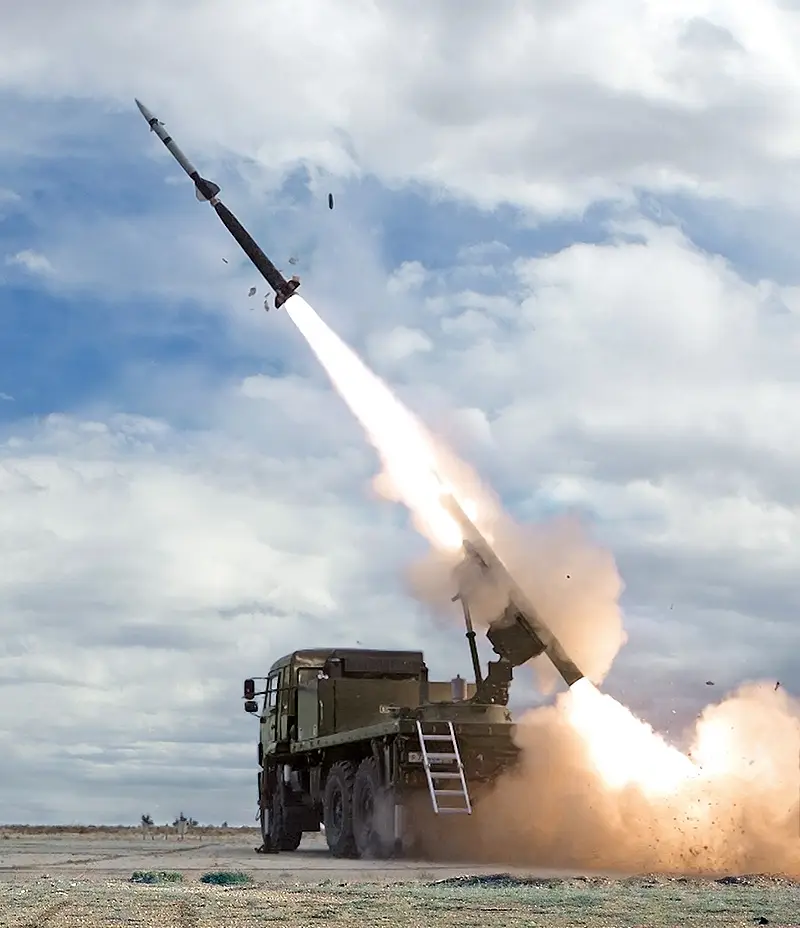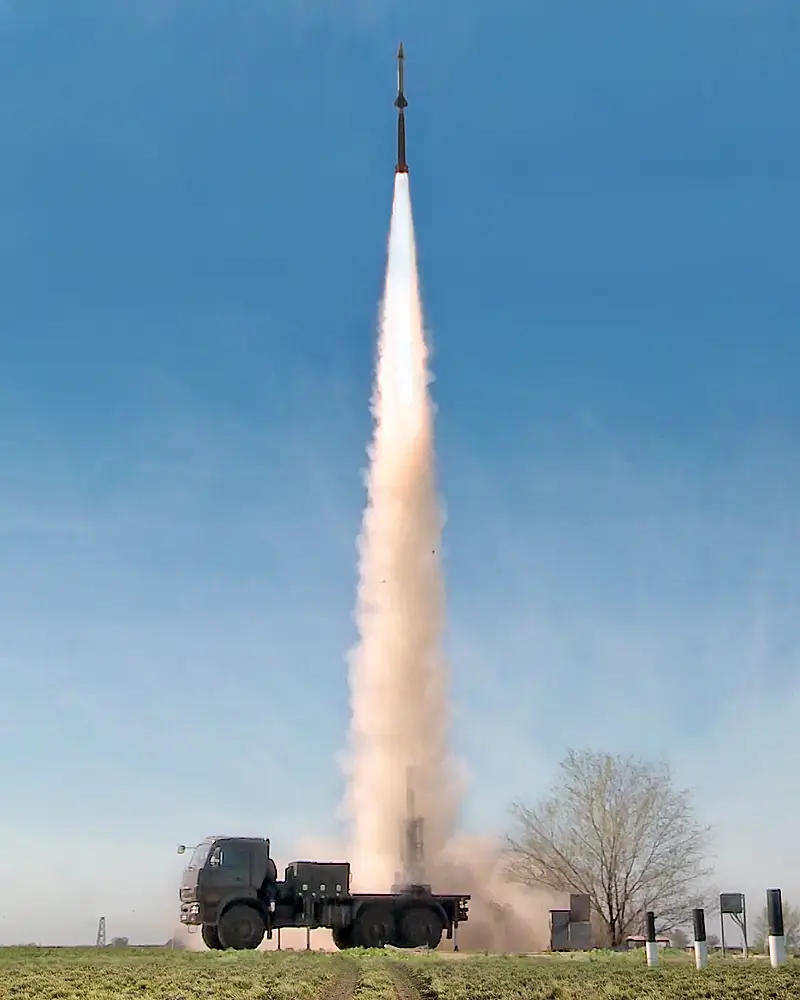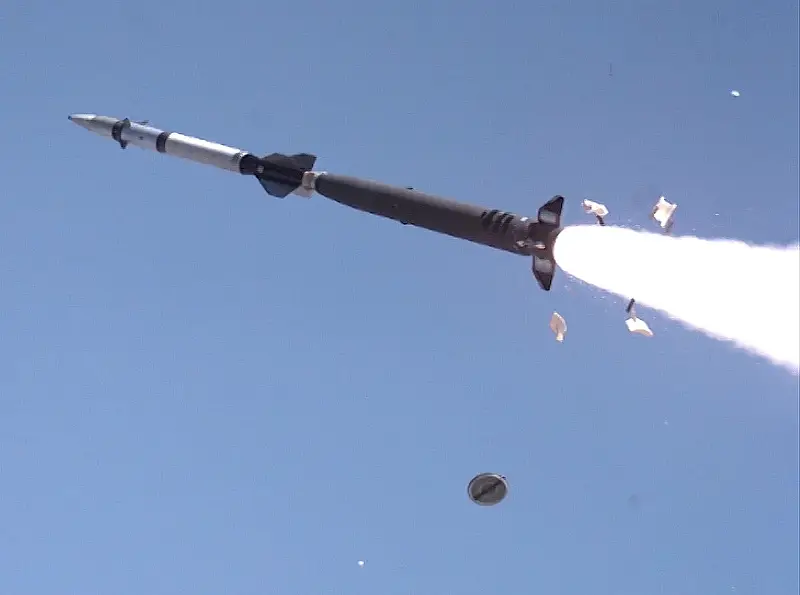The Hermes missile system is at the testing stage. Training grounds and special operation area

Equipment of the Hermes ground complex in stowed position
For the ground forces of the Russian army, a promising multifunctional tactical missile system "Hermes" is being developed, unified with similar systems for other branches of the military. To date, this project has reached the stage of testing at test sites and demonstrations at open events. In addition, the possibility of sending new complexes to the Special Operation zone for testing in real combat conditions is again reported.
Under development
Let us recall that the development of a promising interspecific missile system with the codes “Hermes” and “Klevok” began back in the nineties. The work was carried out in the Tula Instrument Engineering Design Bureau. Development was completed at the beginning of the 2000s aviation a modification of the complex called “Hermes-A”, designed for attack helicopters. A few years later, the new system was first shown to the public.
After the completion of work on the aviation Hermes, the design of a unified ground complex began. An analysis of the needs and requirements of the ground forces was carried out, as a result of which new, more ambitious tactical and technical requirements were formed. The land-based Hermes was supposed to show improved performance, which likely affected the complexity of the project and the timing of its implementation.
The experimental complex "Hermes" / "Klevok" was manufactured and tested in the tens. After carrying out some of the necessary events, it was shown for the first time in the open part of the Army 2020 forum. Photos from the tests were also published, showing the launcher, firing and the missile in flight.
According to known data, the Hermes product is still at the testing and development stage. Thus, in May 2023, the High-Precision Complexes holding, which includes KBP, announced the further development of the project. The complex is undergoing modernization taking into account changes in the general situation and assigned tasks. In its modified form, “Hermes” will have to undergo tests, based on the results of which the issue of adoption and launch of mass production will be decided.

Start of a rocket
Real battlefield
Until now, the Hermes experimental complex or complexes in the land version were tested only at training grounds, i.e. under controlled conditions and with a prepared target environment. Checks of this kind make it possible to determine the achievable level of tactical and technical characteristics, work out application issues, and also find and correct remaining deficiencies. At the same time, the process of testing new designs is not limited only to the training ground, and now developers of military equipment have additional opportunities of this kind.
It is expected that the Hermes will undergo military tests, some of which will be carried out in the zone of the Special Operation for the Defense of Donbass. In this case, crews of experimental or pre-production equipment will have to conduct full-fledged combat work and hit real enemy targets. Tests of this kind will more fully demonstrate the equipment’s compliance with the requirements of modern combat operations.
It is curious that the first rumors about the appearance of Hermes in the Donbass appeared several years ago, long before the start of the Special Operation. It was alleged that the militias of the two republics had at their disposal certain combat vehicles with missiles capable of attacking remote ground targets. According to one of the assumptions at that time, it could be some new modification of the Pantsir-S1 air defense missile system with expanded functions. Later, from rumors, the missile system began to be identified with “Hermes” / “Klevkom”.
At the end of June 2023, information appeared in the domestic press about possible military tests of the new complex in the Donbass. With reference to representatives of the High-Precision Complexes, it was reported that in the near future the new Hermes will go to the Special Operations area and show its potential there. However, the exact start date of such tests and plans for them were not reported.
Over the next few months, the topic of military tests of “Peck” in combat conditions did not appear in the media. New messages of this kind arrived only at the beginning of February. It is again assumed that the equipment will be sent to the front quickly, but details are not given.

Like the last ones news correlate with the June ones is unclear. Perhaps in 2023-24. It was planned to conduct two stages of testing the equipment with modifications between them. It also cannot be ruled out that in both cases we are talking about ordinary rumors, even in the best case, having only a distant relation to the real situation.
One way or another, the Hermes / Klevok land tactical missile system project has now progressed quite far, and a new stage of testing is only a matter of time. The complex will have to prove itself in the context of operation, and it cannot be ruled out that it will have time to take part in the current Special Operation.
Combat potential
"Hermes" for ground forces is a self-propelled missile system designed to destroy stationary and moving ground and surface targets at ranges of up to 100 km. The self-propelled version of the Hermes is unified in its main components with missile systems for aviation and fleet, but must show higher tactical, technical and combat characteristics.
The previously demonstrated Hermes / Klevka samples were built on a three-axle KamAZ automobile chassis. The possibility of using other platforms with sufficient dimensions and carrying capacity is reported. A launcher with remotely controlled guidance and a package of transport and launch containers with missiles is mounted on the base vehicle. The prototypes shown carried six missiles. It is possible to increase the ammunition load.
A command post with fire control devices and its own radar station is designed as a separate vehicle. The antenna of the latter is placed on a lifting mast and allows you to monitor the situation and search for targets throughout the entire range of the complex’s operating ranges.

The Hermes missile immediately after exiting the TPK
The Hermes missile was made using architectural solutions for the Pantsir-S1 air defense missile system. This is a two-stage bicaliber rocket with a total length of 3,5 m and a maximum diameter of up to 210 mm. The starting weight of the product is 90 kg. A solid-fuel rocket engine is used, which provides launch and ejection from the TPK, as well as subsequent entry into the flight path to the target. Flight speed – up to 1 km/s.
The Klevka ammunition is equipped with a combined guidance system. Radio command control is used to fly to the target area. The missile can be equipped with homing heads of various types, ensuring flight in the final phase and hitting the target. A modification with a semi-active laser seeker was demonstrated; It is possible to develop other versions.
The missile carries a high-explosive fragmentation warhead weighing 28 kg. With such parameters, it is capable of destroying manpower and unprotected objects in open areas, various buildings and light armored vehicles. Protected targets, at a minimum, take serious damage. It is also possible to create and implement other warheads with other effects.
Waiting for a result
According to available information, within the framework of the Hermes / Klevok project, several complexes with different deployment options are being developed, as well as a line of unified missiles with different range parameters. This family of missile systems is of particular interest to the armed forces, and there is no doubt that it will be adopted.
However, to be accepted into service, all necessary tests must be completed. In addition, as it became known in the past, the complex is undergoing modifications taking into account updated requirements and circumstances. How long it will take to perfect it is unknown. But all these processes bring the moment of Hermes adoption into service closer.
Information